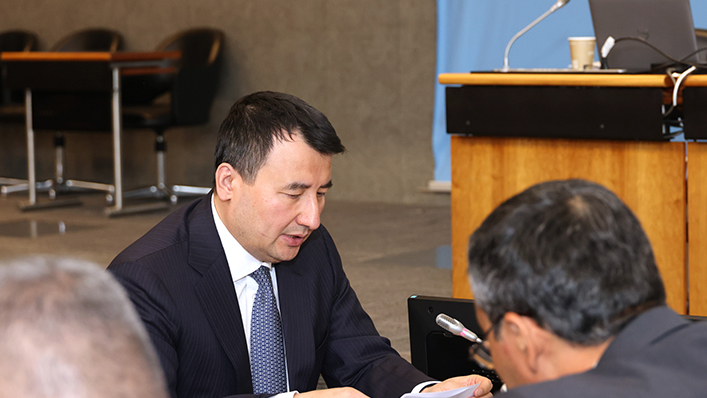Equity markets ended in the red on Wednesday as escalating trade tensions between the US and China dampened investor sentiment, with the benchmark indices sliding for the second time this week. The Sensex closed 379.93 points (0.51 per cent) lower at 73,847.15, while the Nifty 50 dropped 136.70 points (0.61 per cent) to settle at 22,399.15.
The market opened with a gap-down following President Trump’s confirmation of a steep 104 per cent tariff on Chinese goods, which took effect today. This announcement triggered panic across global markets and heightened volatility in domestic equities.
“Indian Market opened with a gap-down today, tracking weak global cues amid heightened tariff concerns. President Trump confirmed the imposition of a 104 per cent tariff on Chinese goods, which is set to take effect today. This announcement triggered panic across global markets, leading to heightened volatility,” said Sundar Kewat, Technical and Derivatives Analyst at Ashika Institutional Equity.
FMCG stocks emerged as the sole bright spot amidst the broader market weakness, with the sectoral index gaining 1.72 per cent. Nestle India led the gainers with a 3.28 per cent jump, followed by Hindustan Unilever which rose 2.61 per cent. Other top gainers included Titan (1.81 per cent), Power Grid (1.78 per cent), and Tata Consumer Products (1.66 per cent).
On the flip side, IT and banking stocks bore the brunt of the selling pressure. Wipro was the biggest loser, tumbling 4.23 per cent, followed by State Bank of India (-3.40 per cent), Tech Mahindra (-3.31 per cent), Larsen & Toubro (-3.13 per cent), and Trent (-2.97 per cent).
The market breadth remained negative, with 2,359 stocks declining against 1,529 advances on the BSE. Only 142 stocks remained unchanged. Seventy-eight stocks hit their 52-week lows, while 57 touched their 52-week highs.
The Reserve Bank of India’s decision to cut the repo rate by 25 basis points to 6 per cent and shift to an accommodative stance failed to lift investor sentiment. The central bank also revised its FY26 GDP growth forecast downward to 6.5 per cent from 6.7 per cent previously.
“The outcome of the MPC meeting—where a 25-bps rate cut was announced along with a shift to an accommodative stance—failed to evoke any meaningful market reaction,” noted Ajit Mishra, SVP Research at Religare Broking Ltd.
The Indian rupee continued its downward trajectory, weakening by 43 paise to close at 86.69 against the US dollar—its lowest level since March 17, 2025.
“Rupee traded weak by ₹0.40 at 86.66, weighed down by heightened global uncertainty after the US announced a steep 104 per cent tariff hike on Chinese goods, escalating trade tensions significantly,” explained Jateen Trivedi, VP Research Analyst at LKP Securities.
In the commodities market, gold witnessed a sharp rally with prices surging by $40 in Comex and ₹1,800 in MCX. “Gold witnessed a sharp rally as prices surged by $40 in Comex and ₹1,800 in MCX, primarily driven by the rapid escalation of the US-China tariff war,” Trivedi added.
Market volatility remained elevated with India VIX rising 4.83 per cent to 21.43, indicating increased nervousness among traders.
Technically, analysts suggest that the market may continue to trade with caution in the near term. “The trend is expected to stay weak below 22,500, with a breakout potentially driving the index to 22,750–22,800. Failure to cross 22,500 may drag it down toward 22,000,” said Rupak De, Senior Technical Analyst at LKP Securities.
Shrikant Chouhan, Head of Equity Research at Kotak Securities, observed, “The current market texture is non-directional; traders may be waiting for a breakout in either direction. For day traders, 22,350/73,650 would act as a key support zone, while 22,500/74,200 could be the key breakout level for the bulls.”
As the earnings season gets underway, market participants will closely watch TCS results due on Friday, which could influence the direction of IT stocks. With heightened global uncertainty and trade tensions, analysts recommend a cautious approach.
“The ongoing volatility continues to keep traders cautious, and any near-term relief seems unlikely given the recent tariff-related developments and the onset of the earnings season,” warned Mishra.
Published on April 9, 2025
















